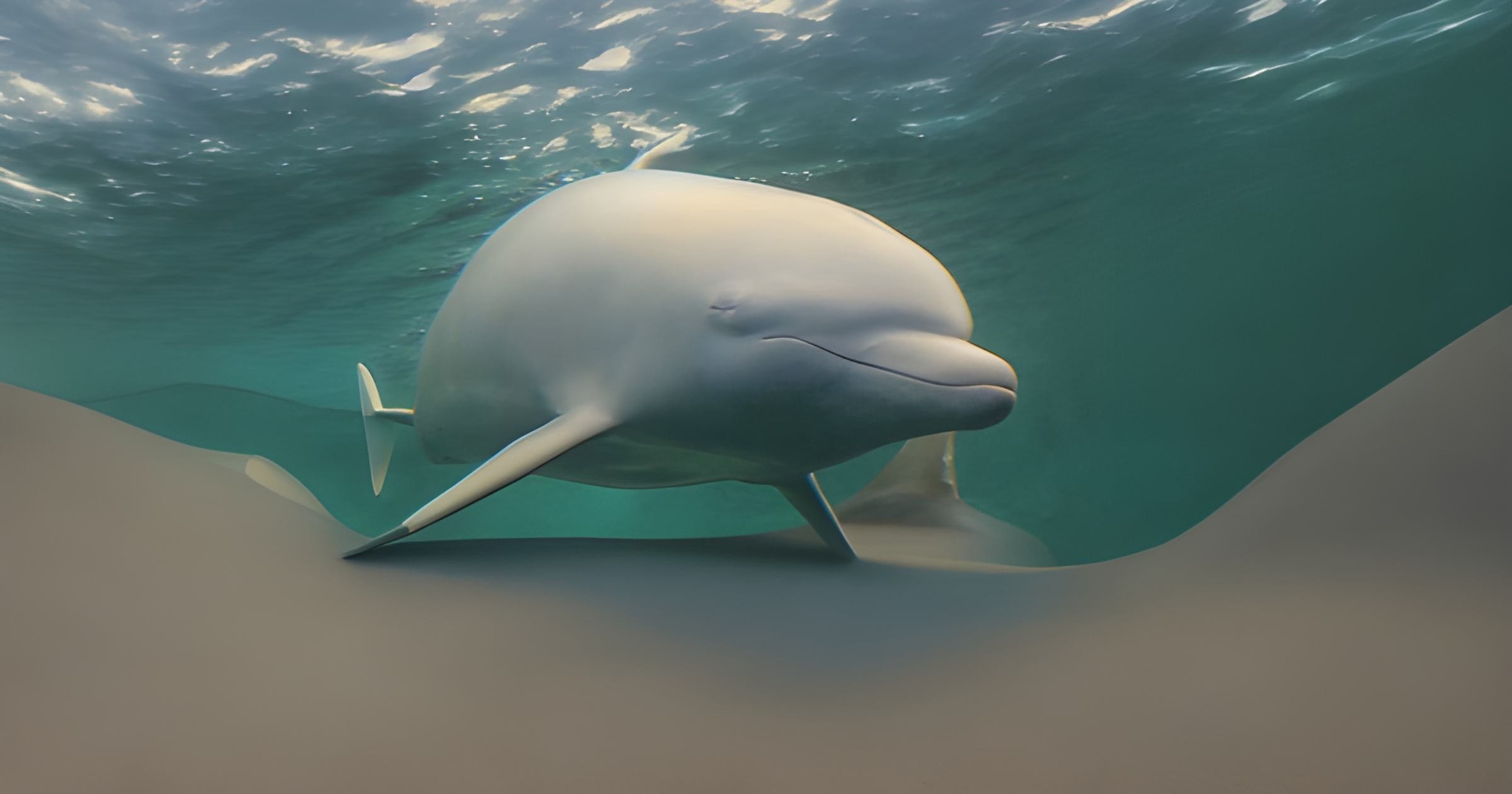FISH INTELLIGENCE AND COGNITION
Fish intelligence and cognition have long been underestimated in the scientific community and popular culture. While fish are often perceived as simple and unintelligent creatures, recent research has shed light on their remarkable cognitive abilities and complex behavior. Studying fish intelligence not only enhances our understanding of these fascinating animals but also raises important questions about their welfare and ethical treatment.

Dolphins are sometimes called the "humans of the sea" because they have many human-like behavior. Their social communications skills, intelligent, Compassionate and emotions. They also have involved at some stuffs more than humans because they also can sleep with 1 eye open and 1 eye closed. This is popular research which is known as "Unihemispheric slow-wave sleep".
1. Learning Abilities and Memory of Fish
Research has shown that fish are capable of learning from experience and modifying their behavior based on past events. They can be trained to perform a variety of tasks, such as navigating mazes, associating cues with food rewards, and recognizing individual conspecifics. Additionally, fish possess impressive memory capabilities, allowing them to remember learned behavior, spatial information, and social relationships over extended periods of time. Aquarium fish and Non-aquarium fish (Sea, River, Lake) behavior are usually different due to this kind of cognition where aquarium fish usually sees activity outside of aquarium and inside the aquarium while Non-aquarium fish rarely sees the outside water activity and mostly they have grown out survival instincts due to creatures around them.


Dr. Victoria Braithwaite & Mozambique Tilapia Fish
Mozambique tilapia (Oreochromis mossambicus), this fish species known for its learning abilities and memory. Research conducted by Dr. Victoria Braithwaite and her team at Penn State University found that this fish could learn to associate a specific colour with a food reward and remember this association for at least 12 days (Average memory-span of fish is between 30 seconds to 12 days and there are also some exceptions). This study demonstrated the fish's ability to form long-term memories and modify their behavior based on past experiences.
2. Problem-Solving Skills and Innovation
Fish demonstrate remarkable problem-solving abilities and innovative behaviors when faced with novel challenges. It involves kind of decision-making, creativity, and information processing. Some species have been observed using objects in their environment as tools to obtain food or modify their surroundings. This behavior suggests a level of cognitive flexibility and adaptability that was once thought to be exclusive to more complex animals.

The archerfish (Toxotes chatareus) is an excellent example of a fish species with impressive problem-solving skills and innovative behavior. Researchers at the University of Oxford conducted experiments showing that archerfish could accurately spit jets of water to knock insects off overhanging branches, demonstrating precise aiming and timing abilities. This behavior requires the fish to assess the distance, size, and speed of the target, showcasing their cognitive capabilities. They can be found in brackish waters of estuaries and mangroves from India to the Philippines, Australia, and Polynesia.
ichthyologists Dr Peggy Gerullis and Dr Stefan Schuster of the University of Bayreuth in Germany have found that archerfish can actively control the hydrodynamics of their jets.
“The timing adjustments that archerfish must make to powerfully hit their targets over an extended range are surprisingly comparable to the ‘uniquely human’ ability of powerful throwing,” the scientists explained.
“It’s possible that the mechanism the fish use to control water with such precision might also find application in human-built nozzles.”
3. Social Behavior and Communication
Fish are fascinating creatures with intricate ways of living together. They have their own social rules, like who's in charge and how they work together. Some fish team up to hunt for food, and others take care of their babies. Surprisingly, they can even remember other fish they've met before and change how they act around them. Even though fish can't talk like we do, they have lots of ways to talk to each other. They use things like how they look, smell, and feel to share information about where they live, who they want to mate with, and if there are any dangers nearby.
1. COMPLEXITY OF SOCIAL STRUCTURES

Fish have different ways of living together. Some fish live alone, while others live in groups. Researchers like Dr. Marian Wong from the University of Wollongong have studied this. They found that some fish, like the cleaner wrasse, live in groups where each fish has its own job. These jobs affect how they eat, mate, and find things they need.
2. COOPERATIVE HUNTING STRATEGIES

Cooperative hunting behaviors are particularly prevalent among certain fish species, where individuals collaborate to increase their chances of capturing elusive prey. A notable example is the group hunting behavior observed in species like the coral trout (Plectropomus leopardus), where individuals coordinate their movements to flush out prey from hiding spots, making them easier targets for the group. Studies conducted by Dr. Redouan Bshary and his team at the University of Neuchâtel studied how these fish communicate while hunting. They found that working together helps them get more food.
3. PARENTAL CARE DYNAMICS

In order to ensure their survival, many fish tend to their young. Certain species, such as mouthbrooding cichlids and seahorses, have fathers that provide the majority of the care. Until they can take care of themselves, they either hold baby fish in their mouths or carry eggs in pouches. Dr. Adam Jones from Texas A&M University studied how hormones in fish affect parenting behaviors. His research shows how important these caregiving methods are for fish to have babies successfully.
4. COGNITIVE ABILITIES AND SOCIAL RECOGNITION

Fish are smarter than many people think. They can remember other fish and recognize them by how they look and smell. Research by Dr. Cait Newport and her team at Oxford University showed that fish like the mangrove killifish can do this. Being able to recognize others helps fish make friends and understand their social groups better. It also helps them know how to act around fish they know and those they don't
5. MULTIMODAL COMMUNICATION CHANNELS

Fish can't talk like we do, but they communicate in other ways. Research by Dr. Karen Maruska at Louisiana State University shows that fish use body movements and postures to show things like who's in charge, where their territory is, and if they're ready to mate. They also use chemicals called pheromones to talk to each other. These chemicals help them figure out if other fish are ready to have babies and where they fit into the group.
6. IMPLICATIONS FOR CONSERVATION AND MANAGEMENT
Learning about how fish behave and talk to each other is really important for protecting them. When scientists understand how fish live together and have babies, they can come up with better ways to help fish survive. This includes things like stopping habitats from getting damaged, making sure we don't catch too many fish, and dealing with changes in the climate. By studying fish social lives, scientists can also figure out the best ways to protect their homes and keep the oceans healthy for our kids and grandkids.
4. Spatial Cognition and Navigation

Fish have an amazing sense of where they are and how to get around. They use their eyes, ears, and other senses to understand their environment. By noticing landmarks, feeling water currents, and even sensing Earth's magnetic fields, they create mental maps to find their way. Fish can remember important places like feeding spots or hiding spots and learn from past experiences to navigate better. Each fish species has its own level of skill in this area, depending on where they live and what they need to do. Understanding how fish find their way is not just interesting; it also helps us manage fisheries better and even design better underwater robots.
Fish researchers like Dr. Michael S. Gordon, Dr. Stephen, Dr. McCormick, Dr. Nathan F. Putman, and Dr. Robert E. Shadwick have studied how fish know where they are and move around. They've found that fish use their senses, like eyes and feeling water, to understand their surroundings. By remembering landmarks and sensing things like water currents, fish make mental maps to find their way.
In above image shown, those researchers recorded the activity of neurons in the central area of the goldfish brain while the fish were freely navigating to study this cognitive component in fish. Implants into the goldfish's central telencephalon part of the brain recorded activity, and the data was logged onto a small recording device placed in a waterproof case mounted on the fish's skull.
5. Implications for Welfare and Management
Ever wondered how smart fish are? Well, it turns out they're pretty clever! Understanding their intelligence and behavior isn't just interesting; it's also crucial for how we take care of them, whether they're in tanks or out in the wild.
Think of it like this: Just like us humans, fish need to stay busy and have friends to be happy and healthy. So, when we create their homes, like an aquarium or a fish farm, we should make sure they have interesting things to do and other fish to hang out with. This keeps them engaged and helps them live their best fishy lives!
Have you ever thought what goes on in the minds of our aquatic friends, the fish? If u have thought it is not necessary that fish also thought what humans thinks. Hahah, Joke aside. While we often project our own personalities onto them, the reality is far more fascinating and complex.
In the vast underwater world, fish have their own unique behaviors and ways of interacting with each other and their environment. Unlike humans, they don't neatly fit into categories like psychopaths, sociopaths, introverts, or extroverts. Instead, they exhibit a diverse range of behaviors shaped by their evolutionary history and environmental factors.
Take, for example, the solitary fish. These are the introverts of the underwater world, preferring the tranquility of solitude over the hustle and bustle of social interaction. They may stake out their own territory and fend off intruders to maintain their personal space.

On the other hand, there are the social butterflies of the sea, the extroverted fish. These species thrive in groups, finding safety in numbers and enjoying the benefits of communal living. From playful shoals of tropical fish to the majestic schools of tuna, these social creatures form intricate networks of cooperation and communication.
But what about the more enigmatic personalities, like psychopaths and sociopaths? While it's tempting to apply these labels to fish exhibiting aggressive or territorial behaviors, it's important to remember that their actions are driven by instinct rather than malice. In the competitive world of survival, aggression and dominance are often necessary traits for securing food and mates.
Ultimately, understanding fish behavior is a journey into the depths of their underwater world, where social dynamics play out in fascinating ways. By observing and appreciating the rich tapestry of behaviors displayed by our aquatic friends, we gain a deeper appreciation for the wonders of the natural world. So, the next time you find yourself gazing into an aquarium or snorkeling in the ocean, take a moment to ponder the intricate social lives of the fish swimming before you. Who knows what secrets they might be hiding beneath the surface?
By doing this, we're not just making sure they're happy and healthy; we're also being more ethical and sustainable in how we care for them. So, next time you see fish swimming around, remember, they're not just pretty to look at, they're also pretty smart!






